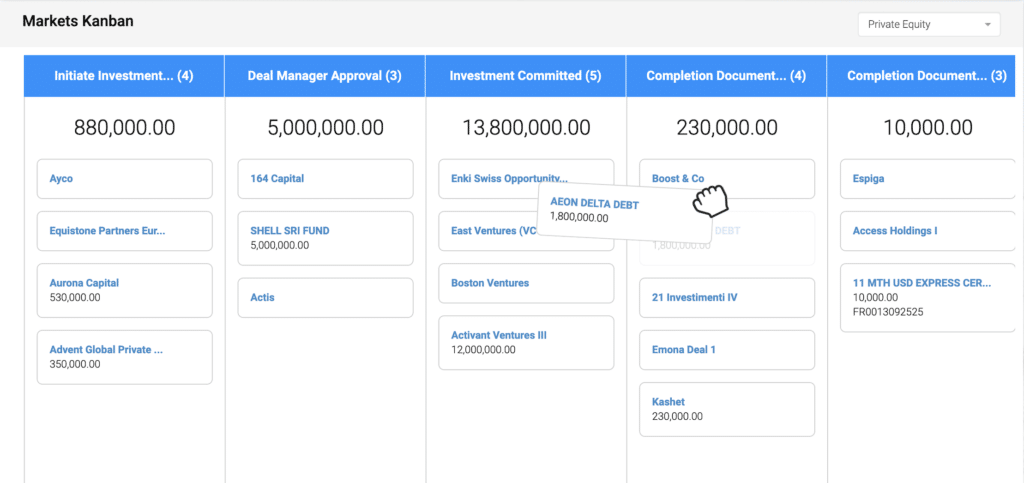What are the 5 stages of sales funnels?

If you’re in sales, then you know that the sales process can be long and winding. There are a lot of different stages that a sale can go through before it’s finally complete. To help you keep track of where your sale is at, we’ve put together a list of the five typical stages of sales funnels. Keep reading to learn more about each stage and how you can make sure your sale goes through them successfully!
The Awareness Stage is the first stage of the sales funnel
In this stage, potential customers are first made aware of your product or service. They may not yet be interested in buying, but they know that you exist.
Being discovered is the first step on the journey to success. The Awareness Stage of the marketing funnel plays a vital role in any business’s ongoing success. This is your chance to make sure that potential customers become aware of your brand, product, or service and consider it for further research. Magnifying your visibility ensures that more people know what you bring to the table, thus creating more legitimized interest from those previously unfamiliar with your offering. Don’t miss out on this important stage of customer acquisition, as having people know you exist can open up revenue opportunities down the line!
Sales have to ask questions and should have a list of questions for ideal customers based on existing customers’ common satisfaction points. Customer success can also be shared with prospects. Prospect like to understand who are the paying customers. Therefore target customer should be limited. Potential customer will have more trust in the product or service when they can identify with it.
The Interest Stage is the key stage of the sales process
Now that potential customers know you exist, they start to become interested in what you have to offer. They may begin to research your product or service and compare it to others on the market.
After potential customers become aware of your product or service and what it can offer, the Interest stage begins, wherein people start to pay closer attention to what you have to offer. By doing research on your specific offering in comparison with the competition, potential customers are able to determine if you uniquely fulfill their needs or if there is another option that may better suit them. Whether interested customers make their decision based on price, quality, convenience or some other factor, they are now a step closer to making a purchase.
Your sales teams should receive marketing materials to support any marketing efforts with a potential customer. Also sales team should use competitive analysis to make sure that your product or service is the best choice. Your sales rep can also provide valuable information to understand how website visitors understand the landing pages. Google search is important for potential customers to find the right company.

The Decision Stage
This is when potential customers finally decide whether or not to buy your product or service. They weigh the pros and cons and make a decision based on their needs and budget.
The decision stage is a pivotal moment for consumers. As they evaluate their options, customers consider the pros and cons and decide which product or service will best meet their needs. Having a deep understanding of their target market can give businesses an advantage when it comes to uncovering those needs. By recognizing what is important to potential customers, businesses can ensure that their offerings are well-positioned in relation to the competition. At the same time, being aware of what people are willing to spend is just as important; after all, it’s not always about having the fanciest features or an expensive price tag – often what matters most is finding a good value.
The Action Stage is the key sales funnel stage
Also known as the purchase stage, this is when customers take action and actually buy your product or service.
After customers have gone through the Awareness and Consideration stages of their journey, they will reach the Action stage. This is the point at which they actually purchase your product or service. It is critical to ensure that there are several different options available for purchasing, such as online, store pickup, delivery, and so on. Additionally, having a well-designed and functional website to transact business is absolutely essential for capturing sales during this stage. Along with a good user experience for customers, consider adding incentives such as discounts or bonus features that can give them additional reasons to buy from your company. By providing multiple payment options and attractive offers, you can increase the likelihood of a successful sale during the Action stage of the customer journey.
Your sales rep should have a clear understanding of the contracts and liability, and duties, particularly if they are working on large requests for proposals. Large companies will impact the sales cycle by asking complex questions about the product. There is a cost and a risk to using large teams for complex RFP. If you are using a SAAS model – we suggest you have a free account to attract prospects of small size without having to spend hours discussing with them. A customer’s purchasing journey can vary from one sales team to another sales team. Successful sales funnel should therefore be duplicated as you will not spend the same time to close a EURO 10.000 deal and EURO 1.000.000 deal. One will appreciate free trials, the other won’t care.

The Retention Stage
After making a purchase, customers enter the retention stage where they use and enjoy your product or service. It’s important to keep them satisfied so they continue using your product or service and don’t switch to a competitor’s offering.”
The retention stage is one of the most important parts of a customer’s journey. After investing in your product or service, it is your responsibility to make sure customers are pleased with the purchase and that their experience is delightful. Satisfaction builds loyalty and encourages customers to advocate for your brand. You can achieve this by providing helpful post-purchase support, creating informative tutorials, and landing page wording, sending out newsletters with new offers or tips about using the product, paying paid ads, and referral programs, and encouraging customers to leave feedback so you can make changes based on their input. Making customers feel valued during the retention stage paves way for success as satisfied customers will be more likely to keep using you and less likely to switch products or services.
New customers will also appreciate new content like step-by-step guides, short videos, written tutorials, and so on. This will help them get the most from your product or service and make them feel more engaged with your brand. Additionally, customers should be encouraged to take actions that add value to their experience such as filling out surveys or leaving reviews after purchase.
The marketing team can help you with this stage. Their work will be used to understand who is the next ideal customer. In any company, we suggest that sales reps and the marketing team work together. The whole company should understand the email campaigns, social media posts, new visual representation, how many visitors arrived on your website. The marketing team also should understand the sales pitch! There is nothing like the top of the funnel, the middle of the funnel or the end of the funnel. It’s a good sales funnel with defined steps to help future prospects become happy customers!
The CRM and the pipeline
The sales funnel starts with the CRM (Customer Relationship Management) and then moves through the pipeline. CRM is used to track customer interaction such as website visits, emails, phone calls, etc. This data can be used to better understand what customers are interested in and how best to reach out to them. We built with InvestGlass CRM a sales funnel template that will facilitate any sales rep work. By having a CRM and pipeline in place, it is easier to track the customer journey from awareness all the way through to retention.

Ultimately, a sales funnel should be used as a tool to help identify customers who are likely to convert and become loyal brand advocates. By understanding each stage of the customer journey, you can provide better experiences for customers and increase your chances of success. With the right strategies and tools, you can ensure that customers move through each stage of the sales funnel smoothly and happily.
We build a tool with an alert system that notifies when the conversion rate is too slow and the next stage’s maximum time is not respected. This is not to control the sales but to better understand the buying process bottleneck. A prospective customer can be different than qualified lead. Deams… reality… There is nothing like a well-defined sales funnel. It’s a test and trial like a search engine optimization stages of sales vary. The company’s sales model has to change often.
Understanding the customer journey and what stage potential customers are in is essential for driving sales. By using InvestGlass CRM, you can better understand how people think and make decisions. This will allow you to market your product or service to them, increasing your chances of making a sale. Have you considered using neuroscience in your marketing strategy? What other methods do you use to understand your customer’s needs and desires?